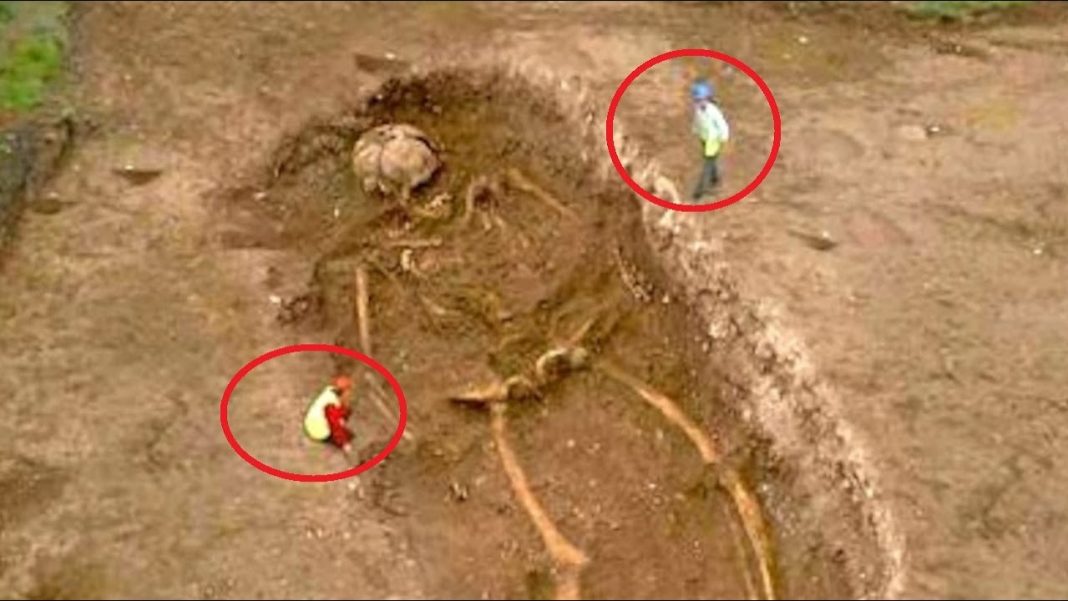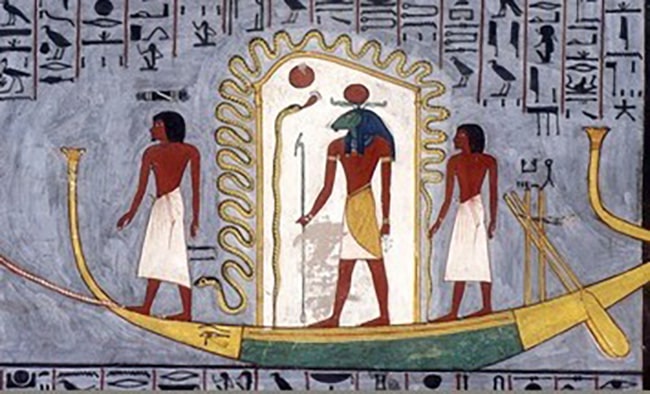Have you ever wondered if giants roamed the Earth? From towering Norse Jötnar to the monstrous Gigantes of Greek myth, giants have captivated humanity for millennia. This article embarks on a captivating exploration to answer the question: “Are giants real?”.
We’ll delve into the rich tapestry of giant lore, exploring the fearsome Jötnar and the benevolent Chikatilo of Central Africa. We’ll journey to ancient Greece, where the Gigantes challenged the Olympian gods in a legendary battle. The Bible’s enigmatic Nephilim will also be on the table, raising questions about their true nature.
But our odyssey doesn’t stop at myth. We’ll investigate the science behind giants, examining the limitations of the human body and the lack of concrete evidence for towering human skeletons. However, the story doesn’t end there. The existence of megafauna, colossal creatures that once roamed the Earth, might offer a fascinating link to giant myths.
Prepare to be surprised as we explore the possibility that giants may not be literal beings, but symbolic figures born from our encounters with the extraordinary and our desire to explain the mysteries of the world. So, buckle up and join us on this captivating quest to unearth the truth behind the giants!
Giants in Folklore and Mythology: Tales from Around the World
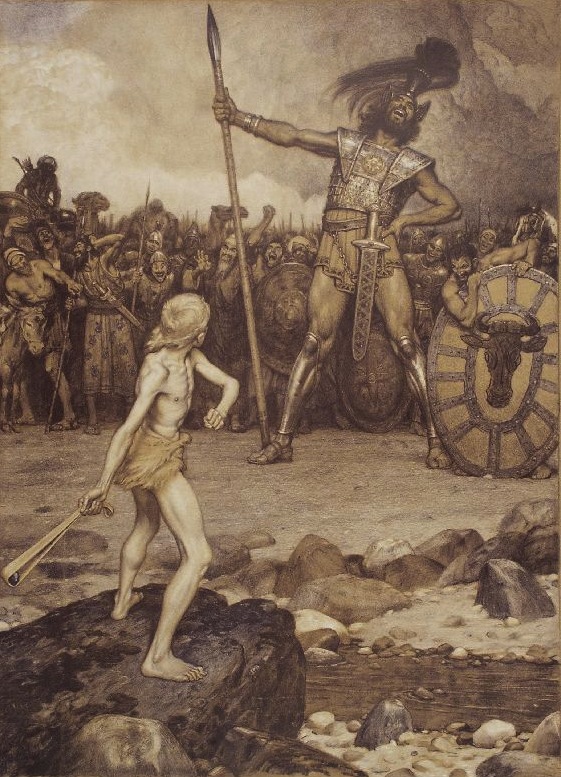
The legend of giants – towering beings of immense strength – has captivated humanity for millennia. Woven into the fabric of folklore and mythology across the globe, these giants come in all shapes and sizes, reflecting the hopes, fears, and imaginative prowess of different cultures. But as we ponder the question, “Are giants real?”, a closer look at these fantastical figures reveals a fascinating tapestry of storytelling.
From Norse Jötnar to African Chikatilo: In Norse mythology, the Jötnar were a race of formidable giants, often depicted as chaotic and destructive forces. In stark contrast, the Chikatilo of Central African lore were benevolent giants who, according to legend, helped shape the Earth’s landscape.
Greek Gigantes and the Birth of Mountains: Greek mythology offers a more adversarial take on giants. The Gigantes, monstrous children of Gaia (Earth) and Uranus (Sky), challenged the Olympian gods for dominion. Their epic battle, the Gigantomachy, resulted in the Gigantes’ defeat, with their bodies supposedly buried beneath mountains, explaining their formation.
Giants in the Bible: A Question of Interpretation: The Bible also mentions giants, such as the Nephilim, a race said to have walked the Earth before the flood. However, interpretations vary. Some believe these giants were literal beings, while others view them as a metaphor for powerful, wicked people.
Giants Across Continents: From the Aboriginal Australian Bunyip, a serpentine water spirit of immense size, to the Native American Algonquin tale of Glooskap, a benevolent giant who created mountains and valleys, the giant myth transcends geographical boundaries. It seems every culture has its own interpretation of these colossal figures.
These are just a few examples from a vast and diverse pool of giant lore. The concept of giants real seems to have emerged independently in numerous cultures, suggesting a universal human fascination with beings who exceed our limitations. Whether giants real represent our primal fear of the unknown, a desire to explain the Earth’s natural wonders, or simply a celebration of the power of human imagination, their enduring presence in folklore and mythology speaks volumes about our relationship with the world around us.
As we delve deeper into the question of “Are giants real?”, understanding these legendary figures becomes a captivating journey through the history of human storytelling.
Greek Titans and Gigantes: The Seeds of the Giant Earth-Born
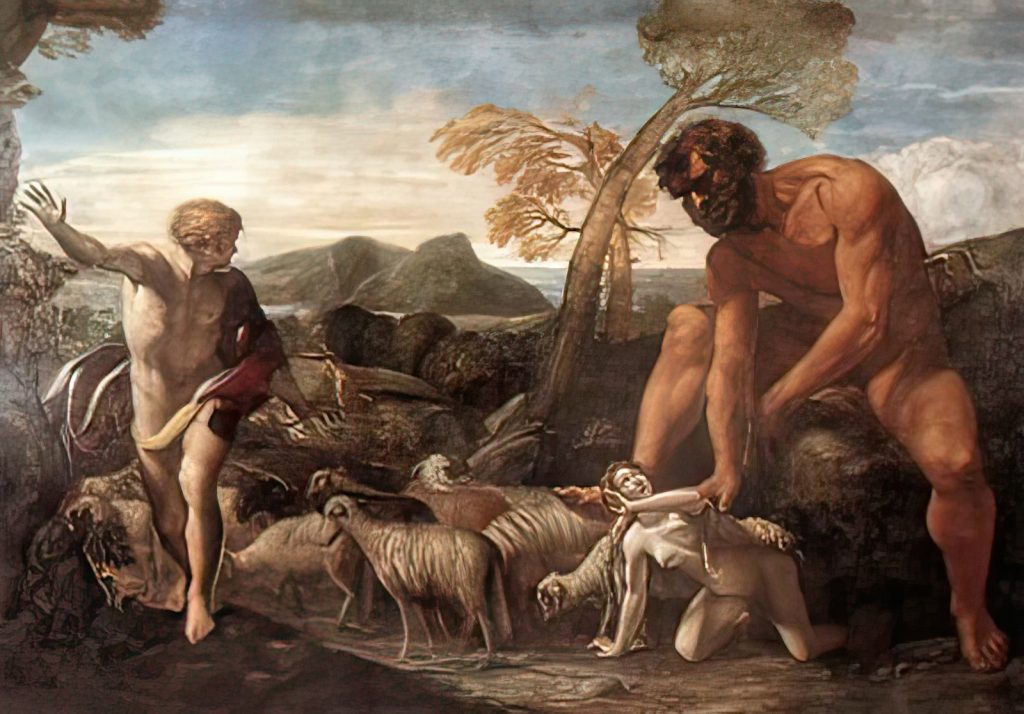
In the fertile ground of Greek mythology, the seeds of the giant myth were sown with the birth of the Gigantes (plural for Gigas). These fearsome beings weren’t merely oversized humans; they embodied the raw power and untamed wildness of the Earth itself.
Hesiod, a pivotal figure in Greek epic poetry, tells us the Gigantes were the offspring of Gaia (Earth), born from the blood of Uranus (Sky) after his violent castration by his son Cronus. This violent origin story hints at the Gigantes’ inherent rebellious nature.
Monstrous Giants: Size and Fury
Descriptions of the Gigantes vary, but they are generally depicted as colossal figures, some reaching up to 120 feet tall. Their physical appearance often emphasized their connection to the Earth – some sported serpent-like tails instead of legs, while others had long, matted hair and beards. Their ferocious aspect was further accentuated by fearsome weaponry, including massive boulders and uprooted trees.
Clash of the Titans: Gigantomachy and the Rise of Olympus
The Gigantes’ most famous exploit is the Gigantomachy, a legendary war against the Olympian gods for dominion over the cosmos. This epic battle, often depicted in Greek art, saw the Gigantes challenging the newly established Olympian order.
Despite their immense strength and connection to the Earth, the Gigantes were ultimately defeated by the combined might of the Olympian gods, with the help of specific heroes like Heracles. Their defeat solidified the Olympians’ reign and cemented these giants as symbols of rebellion and the untamed forces of nature.
Are Giants Real? The Legacy of the Gigantes
The Gigantomachy may be a myth, but it serves as a powerful metaphor for the struggle between order and chaos, civilization and wilderness. While these giants real don’t translate to literal beings in our world (at least according to current scientific understanding!), their enduring legacy in Greek mythology reminds us of humanity’s fascination with the colossal and the untamed.
The story of the Gigantes becomes another piece of the puzzle when we ask, “Are giants real?”. Perhaps the truth lies not in their physical existence but in their symbolic power and the stories they continue to inspire.
Giants in the Bible: Fact, Fiction, or Something In Between?
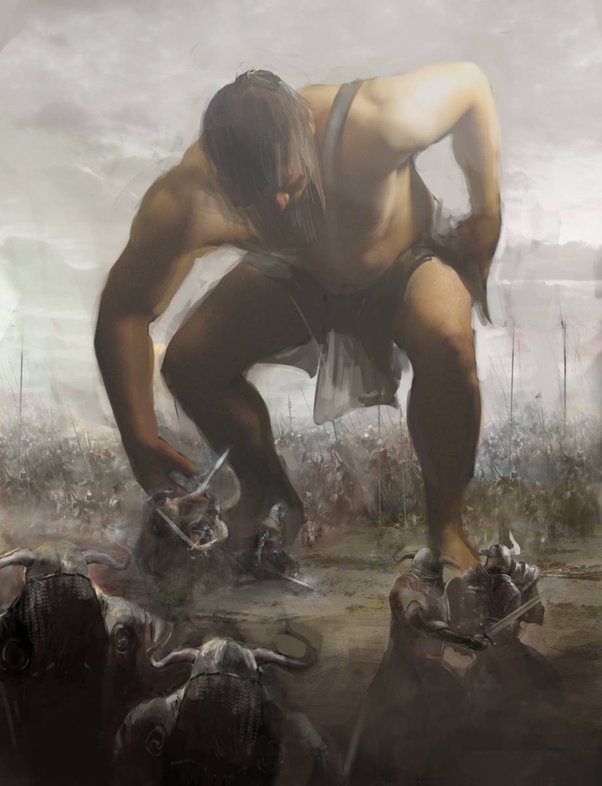
The Bible throws its own intriguing entry into the ring of giant lore. The Hebrew word “nephilim” is most often translated as “giants” in reference to a pre-flood race mentioned in Genesis 6:4. But does this definitively answer the question, “Are giants real?” The answer, as with many things in the Bible, is a bit more nuanced.
Nephilim: Giants or Something Else?
The passage in Genesis describes the Nephilim as existing “in those days and also afterward” when the “sons of God” took human wives and had children. The exact identity of the “sons of God” is debated, with some interpretations suggesting fallen angels. However, the focus here is on the Nephilim themselves.
While “giants real” is a common translation, the meaning of “nephilim” is less clear-cut. Some scholars believe it could refer to tyrannical rulers or mighty warriors, not necessarily beings of immense physical stature.
Giants or Symbols of Wickedness?
Another key point to consider is the context. The book of Genesis is setting the stage for the flood narrative, a story about humanity’s descent into wickedness. The Nephilim could be symbolic representations of this moral decay, a race known for their violence and disregard for God’s law.
Giants in the Land of Canaan: Fact or Folklore?
The Bible mentions giants again in the book of Numbers, where the Israelites encounter the Anakim, a tribe inhabiting the land of Canaan. Here, the language suggests a literal interpretation of giants, as the Israelites describe themselves as “grasshoppers” in comparison.
However, it’s important to remember that these accounts were written centuries, even millennia, after the supposed events. Memories and stories can become embellished over time, and the concept of giants might have been a way for the Israelites to explain impressive ruins or the fear of conquering a new land.
Are Giants Real? The Enduring Mystery
The Bible’s giants remain shrouded in mystery. Whether literal beings or symbolic figures, their presence adds another layer to the question of giants’ existence. Perhaps the answer lies not in a definitive yes or no, but in the power of storytelling to capture our imagination and grapple with complex themes like good versus evil, and humanity’s place in a vast and sometimes frightening world.
Unearthing Giants: Fact or Fiction in the Bone Pit?
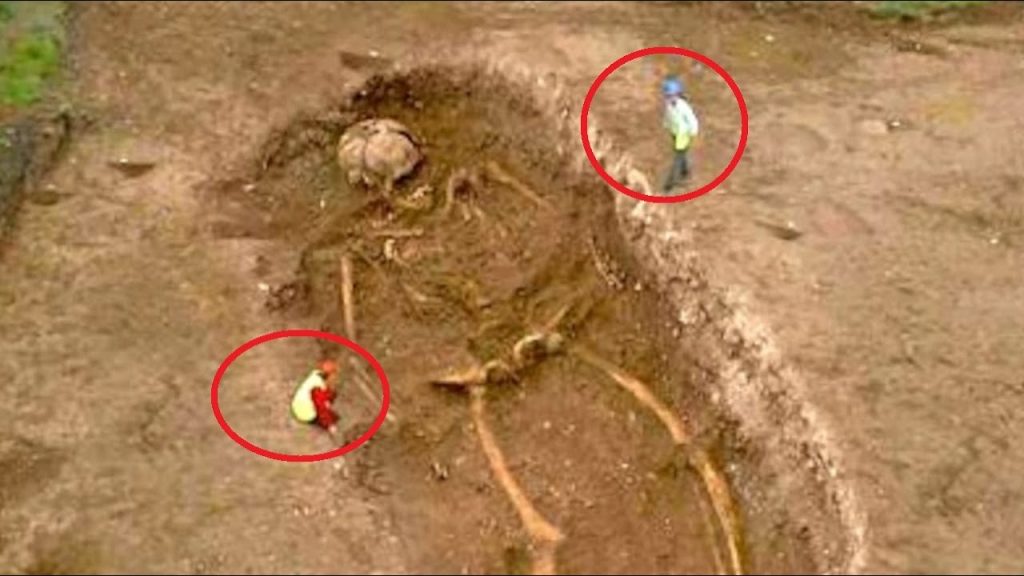
Throughout history, sensational claims of unearthed giant skeletons have fueled the fire of giant lore. But as we delve deeper into the question, “Are giants real?”, a closer look at these discoveries reveals a fascinating mix of hoaxes, misidentifications, and the limitations of archaeological evidence.
Giants Unearthed? A History of Hoaxes
The 19th and early 20th centuries witnessed a surge in “giant finds,” often fueled by a public hungry for sensational stories. Many of these discoveries, however, were later exposed as elaborate hoaxes.
The Cardiff Giant, a massive carved stone figure unearthed in upstate New York in 1869, was initially hailed as a genuine archaeological marvel. However, further investigation revealed it to be the handiwork of a crafty stonecutter. Similarly, stories of “giants real” skeletons found in burial mounds across the Americas were often debunked as the misinterpretation of animal bones or clever manipulations by showmen.
Giants or Megafauna? The Case of Misidentification
Beyond outright hoaxes, another factor clouding the waters of giant discoveries is the misidentification of animal remains. The Earth was once home to a menagerie of colossal creatures known as megafauna, including mammoths, giant sloths, and dire wolves. When encountering these immense bones, especially incomplete skeletons, early explorers or untrained diggers might have mistakenly interpreted them as evidence of giants.
The Limits of Evidence: Why Finding Giant Skeletons is Improbable
Even setting aside hoaxes and misidentifications, the very nature of fossilization makes finding complete giant human skeletons highly improbable. Our bones are not built to withstand the pressures of time and earth. Over millennia, they decompose, break down, and scatter, making the discovery of a fully intact giant skeleton a scientific longshot.
Are Giants Real? The Search Continues
While the evidence for literal giants walking the Earth remains slim, the search for answers continues. Modern archaeologists and paleontologists meticulously examine unearthed remains, employing sophisticated techniques to distinguish human from animal bones. And who knows, perhaps future discoveries might shed new light on this enduring mystery.
However, for now, the question of “Are giants real?” hangs in the balance. The lack of conclusive skeletal evidence keeps the door open for debate, but scientific understanding and a critical examination of past claims provide a valuable lens through which to view the captivating legend of are giants real.
Megafauna and the Myth: Giants or Ghosts of the Past?
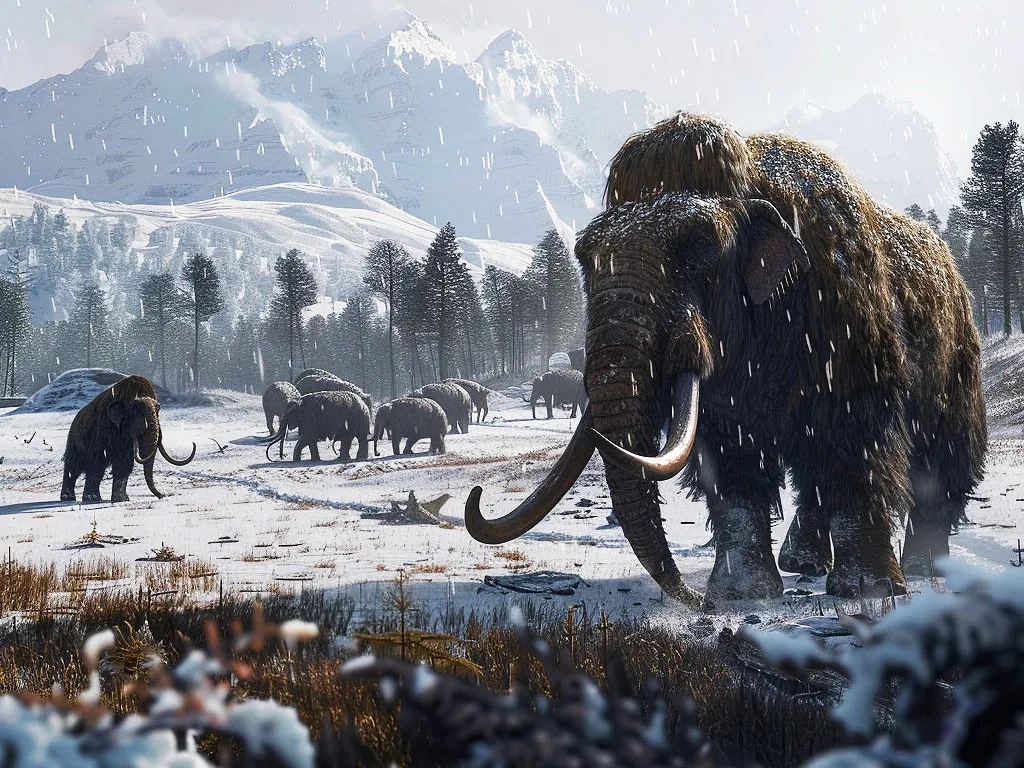
As we explore the enduring question, “Are giants real?”, the concept of megafauna emerges as a compelling factor in understanding the origins of giant myths. Megafauna refers to the colossal creatures that roamed the Earth during the Pleistocene epoch, ranging from the iconic woolly mammoths to giant ground sloths and towering dire wolves. Their sheer size and imposing presence might offer a surprising link to the legendary giants that populate folklore and mythology.
Giants of a Bygone Era: Megafauna and Their Disappearance
These magnificent beasts dominated their ecosystems for millions of years. The largest mammoths, for example, dwarfed modern elephants, reaching heights of up to 14 feet at the shoulder. Imagine encountering such a creature! It’s no wonder that these giants real of the past would leave a lasting impression on the human imagination.
However, around 11,700 years ago, most megafauna species mysteriously vanished from the Earth. The exact reasons for their extinction remain a subject of ongoing scientific debate, with climate change and human hunting both being considered possible factors.
Unearthing the Past: Misunderstanding Megafauna Bones
Fast forward to the dawn of human civilization. Early cultures, encountering the massive bones of these long-extinct creatures, would have lacked the scientific context to understand what they were looking at. Imagine unearthing a mammoth femur – a bone that can reach up to 13 feet in length! To an untrained eye, it could easily resemble a giants real human leg bone.
Giants or Megafauna? The Power of Storytelling
Here’s where the power of storytelling comes into play. These enormous bones, coupled with the lack of a living comparison, could have fueled tales of giants who once walked the Earth. Stories get embellished over time, and the factual details might become blurred, leaving behind a powerful myth that continues to resonate with us today.
Are Giants Real? Beyond the Bones
The existence of megafauna offers a fascinating explanation for the origins of some giant myths. While it’s unlikely these creatures were literal human giants, their immense size and mysterious disappearance could have easily been woven into narratives of colossal beings from a bygone era.
By understanding megafauna, we gain a deeper appreciation for the interplay between human experience and the natural world. It also reminds us that the question of “Are giants real?” isn’t just about physical evidence; it’s about the stories we tell ourselves and the enduring power of the imagination.
The Enduring Mystery: Can Science Debunk the Giant Myth?
As we delve into the question, “Are giants real?”, modern science offers valuable insights into the biological limitations that make the existence of towering human giants highly improbable.
Giants: A Biological Implausibility
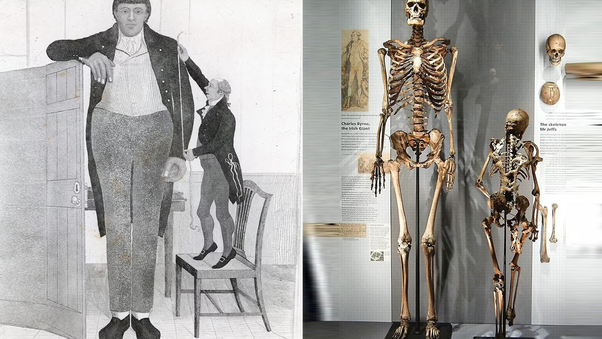
The human body is a marvel of engineering, but it has its limits. Our skeletal structure and musculature are designed to support our current size range. Imagine the challenges a creature twice or three times our height would face. The immense weight on their bones would make simple movements a monumental task, and their hearts would struggle to pump blood efficiently throughout their bodies.
Additionally, gigantism, a hormonal condition that can cause excessive growth, exists in the real world, but it comes with severe health complications. People with gigantism rarely reach heights exceeding 8 feet, and they often suffer from debilitating joint pain and other health issues.
Giants and DNA: The Missing Evidence
The field of genetics also throws shade on the giant myth. Our DNA holds the blueprint for our physical development. If a race of giants real ever existed, there should be some genetic markers setting them apart from Homo sapiens. However, extensive research hasn’t revealed any such evidence.
Science and the Open Mind: Leaving Room for the Unknown
While science strongly suggests giants as we imagine them are unlikely, the spirit of scientific inquiry demands we remain open-minded. New discoveries can rewrite our understanding of the past. Perhaps future advancements in paleontology or genetics might shed new light on the question.
Beyond the Physical: The Allure of Giants
The question of “Are giants real?” isn’t solely a scientific one. Giants hold a powerful place in our cultural imagination. They represent strength, mystery, and a connection to a primordial past. Whether literal or symbolic, these towering figures continue to inspire artists, writers, and storytellers.
The Enduring Legacy: Giants and the Human Story
In conclusion, while the existence of literal giants seems improbable based on current scientific understanding, their enduring presence in myth and legend speaks volumes about the human spirit. Giants remind us of our fascination with the extraordinary, our desire to push boundaries, and our yearning for answers to the mysteries that surround us.
Giants: A Legacy of Wonder – Looking to the Future
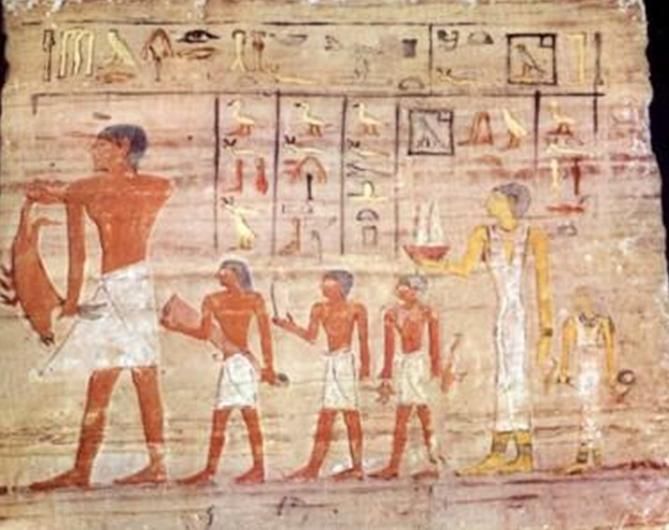
From the towering titans of Greek mythology to the fearsome Jötnar of Norse legends, the concept of giants has captivated humanity for millennia. As we conclude our exploration of the question, “Are giants real?”, it becomes clear that these colossal figures transcend the realm of physical existence, leaving an enduring mark on our cultural and historical tapestry.
Giants: A Reflection of Human Imagination
Across cultures and continents, giants real have served as a powerful metaphor for the unknown, the untamed forces of nature, and even our own primal fears. Their immense size evokes awe and a sense of wonder, reminding us of our place in a vast and sometimes bewildering universe.
Giants and Storytelling: A Universal Thread
Whether depicted as benevolent protectors or fearsome foes, giants have become integral characters in our stories. From the epic clashes of the Gigantomachy to the cautionary tales of cunning giants outwitted by humans, these narratives reveal a universal human fascination with the concept of beings who surpass our limitations.
Giants and Science: The Quest for Answers
While science may cast doubt on the literal existence of giants real walking the Earth, the quest for answers continues. New archaeological discoveries and advancements in fields like paleontology and genetics might hold the key to unlocking further mysteries about the past. Perhaps the truth about giants lies not in finding their skeletons but in understanding the stories they inspired.
Are Giants Real? The Enduring Mystery
The question of “Are giants real?” may not have a definitive answer, but the journey of exploration is far from over. As we delve deeper into history, mythology, and the workings of the natural world, the giants real may continue to surprise us. Whether literal or symbolic, these colossal figures will undoubtedly continue to spark our imaginations and inspire future generations.
Looking to the Future: What Lies Beyond the Horizon?
The legend of giants real serves as a testament to the enduring power of storytelling and the human curiosity that drives us to explore the unknown. While the giants of myth may not be real in the biological sense, they remind us of the wonders that might still be waiting to be discovered. So, the next time you gaze at the stars or explore a forgotten corner of the world, remember – the answer to the question, “Are giants real?” might just be waiting to be unveiled.
Frequently Asked Questions (FAQs)
1. Were there ever real giants on Earth?
The existence of literal giants walking the Earth is highly improbable based on current scientific understanding. Our skeletal structure and DNA make it difficult to sustain such immense size. However, the possibility of future discoveries that shed new light on the past cannot be entirely ruled out.
2. How do megafauna connect to the myth of giants?
Megafauna, the giant creatures that roamed Earth during the Pleistocene epoch, could be a source of inspiration for giant myths. Their immense size and bones could have been misinterpreted by early cultures, leading to stories of giants from a bygone era.
3. What is gigantism, and how does it relate to giants?
Gigantism is a hormonal condition that causes excessive growth. While it exists in the real world, people with gigantism rarely reach extreme heights and experience health complications. This condition highlights the biological limitations of extreme size in humans.
4. Can giants be explained by aliens or other beings?
While the possibility of extraterrestrial life cannot be definitively disproven, there’s no scientific evidence to suggest giants were aliens. The focus of giant myths likely lies within the human experience and our attempts to understand the world around us.
5. Why are giants still so fascinating, even if they aren’t real?
Giants capture our imagination. They represent strength, mystery, and a connection to a primordial past. Whether literal or symbolic, these figures inspire artists, writers, and storytellers, leaving an enduring mark on our culture.
The enduring allure of giants speaks volumes about humanity’s fascination with the extraordinary. From towering titans to cunning jötnar, these colossal figures have permeated cultures across the globe. As we’ve explored, the question of “Are giants real?” might not have a definitive answer in the biological sense. However, their presence in myths and legends reveals a deeper truth about our desire to push boundaries, explore the unknown, and grapple with the mysteries of the world around us.
While the prospect of unearthing a giant’s skeleton might seem like the stuff of fairytales, the pursuit of knowledge about the past is far from a fantastical notion. Here at Mystery Uncover, we delve into captivating historical enigmas, separating fact from fiction. For instance, in our exploration of King Solomon and the Queen of Sheba, we unearth the truth behind their legendary encounter, using recent archaeological discoveries to shed light on these enigmatic rulers. So, while we may not find literal giants roaming the Earth, the quest to uncover the secrets of our past continues to be a thrilling giant leap for humanity’s understanding of itself.


